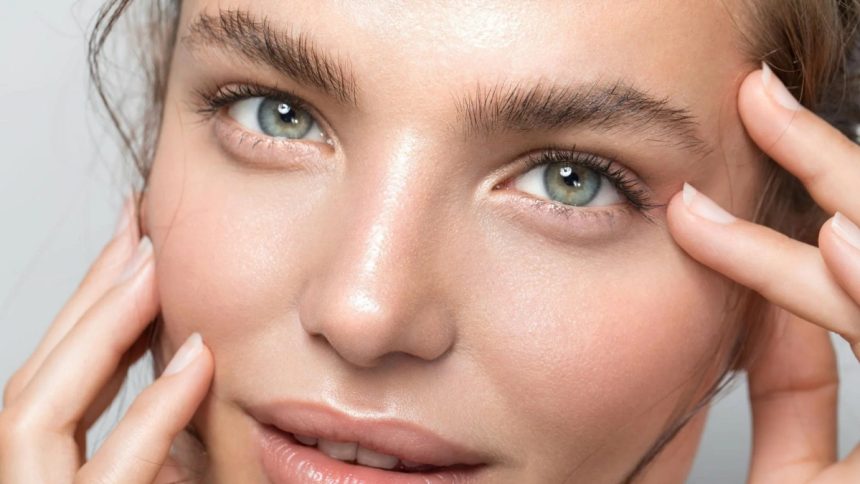Introduction to Double Eyelids
In the diverse landscape of cosmetic enhancements, one particular procedure that has emerged with significant popularity is double eyelid surgery. Characterized by the creation or enhancement of a crease in the upper eyelid, known as a double eyelid, this procedure is not merely a beauty trend but deeply rooted in cultural aesthetics and personal identity. Genetic predispositions often determine the presence of double eyelids, but many individuals without this natural fold pursue surgery for aesthetic reasons.
Double eyelids are both a natural trait and an aesthetic preference that varies across ethnic lines. It provides individuals with a unique facial feature often associated with youth and alertness. However, beyond the surface, double eyelids can considerably influence a person’s life, affecting their self-image and how they are perceived socially and culturally.
The Growth of Double Eyelid Surgery Globally
Previously concentrated in regions such as East Asia, where the genetic trait for monolids is prevalent, double eyelid surgery has increased interest across a tapestry of geographies, hinting at the interconnected nature of beauty standards. Current statistics demonstrate an increase in eyelid surgeries, suggesting an alignment with global beauty trends that favor the wide-eyed look that double eyelids can offer.
The procedures themselves span a spectrum, from the intricate to the minimally invasive, highlighting a fascinating dichotomy between the pursuit of beauty and the tolerance for medical intervention.
Perceptions and Implications
As with any form of cosmetic surgery, the decision to alter one’s appearance, specifically by modifying an ethnic trait such as eyelid structure, is subject to extensive scrutiny. This scrutiny is not merely external but originates within individuals themselves as they navigate the complex emotional landscape that accompanies the choice to undergo surgery. Societal beauty norms, family expectations, and personal desire intersect uniquely for each person contemplating this change.
Moreover, the psychological journey accompanying a physical transformation of this nature cannot be understated. The potential for improved self-perception post-surgery juxtaposes the risk of internalized conflict or dissatisfaction, making it a decision that requires careful consideration. The implications for cultural identity and the subsequent reactions from one’s community require those interested in surgery to weigh their choices thoroughly.
Double Eyelid Surgery Techniques
Delving deeper into the procedural aspect, double eyelid surgery is not a monolithic practice but an umbrella term for various surgical interventions. Among these, the incision technique reigns as the definitive approach for permanent double eyelids, while the suture method offers a less invasive, though less permanent, alternative. The candidate’s eyelid anatomy, desired outcome, and tolerance for recovery time are all factors that influence the selected technique.
Additionally, non-surgical approaches exist for those seeking a temporary solution or those not ready to commit to surgery. Products such as eyelid tapes or adhesives enable experimentation with the aesthetic of double eyelids without the permanence or risks associated with surgery. These methods can offer insights into how a more permanent change might look and feel.
Choosing the Right Surgeon
The success of any cosmetic procedure, including double eyelid surgery, is contingent on the surgeon’s skill and experience. Criteria that steer one toward the right choice typically include the surgeon’s record of consistent positive outcomes, a transparent portfolio of work, and the proper certification by reputable medical boards. These qualifications indicate a trustworthy professional who can deliver on the promise of a safe and aesthetically pleasing enhancement.
Before selecting a surgeon, one should appreciate the importance of thorough research and consultations. The decision is as impactful as the surgery itself—choosing wisely could mean the difference between satisfaction and regret. Prospective patients should feel empowered to ask questions, seek multiple opinions, and feel a genuine sense of trust in their chosen healthcare provider.
Before and After: Real-life Stories
Patient testimonials and documented experiences serve as compelling narratives on the transformative nature of double eyelid surgery. The stories of individuals who have traversed this path highlight the change in their physical appearance and the profound impact on their self-confidence and sociocultural interactions.
From dealing with pre-surgery anxieties to celebrating post-operative satisfaction, real-life stories offer a glimpse into the emotional rollercoaster that can accompany aesthetic changes. Such anecdotes can be instrumental in guiding others contemplating similar procedures, providing realistic expectations and heartfelt encouragement.
Post-Surgery Care
The completion of double eyelid surgery marks the beginning of the recovery process, a crucial period that dictates the long-term success of the procedure. Adhering to post-operative instructions, attending follow-up visits, and maintaining a healthy environment for healing are all pivotal steps. These efforts mitigate risks and foster admirable results, ensuring that the courage to undergo surgery pays off aesthetically and health-wise.
Patients should be well-informed about the entire recovery arc, from the immediate aftermath of the surgery to the final unveiling of their new look. Understanding the typical healing timeline and any temporary limitations is vital to maintaining realistic expectations and patience throughout the journey to recovery.
Future of Eyelid Surgery
The arena of cosmetic eyelid surgery stands on the cutting edge of medical advancement, with burgeoning technologies and sophisticated techniques constantly evolving. These innovations promise a future where such procedures are more effective, able, and accessible to a broader audience. Insights into upcoming trends suggest a continued normalization and customization of eyelid surgeries, catering to a broader array of aesthetic objectives and personal preferences.
Lynn Martelli is an editor at Readability. She received her MFA in Creative Writing from Antioch University and has worked as an editor for over 10 years. Lynn has edited a wide variety of books, including fiction, non-fiction, memoirs, and more. In her free time, Lynn enjoys reading, writing, and spending time with her family and friends.















